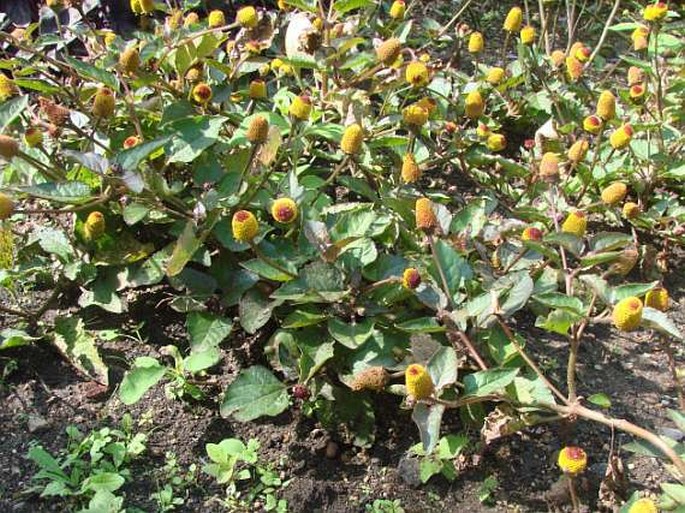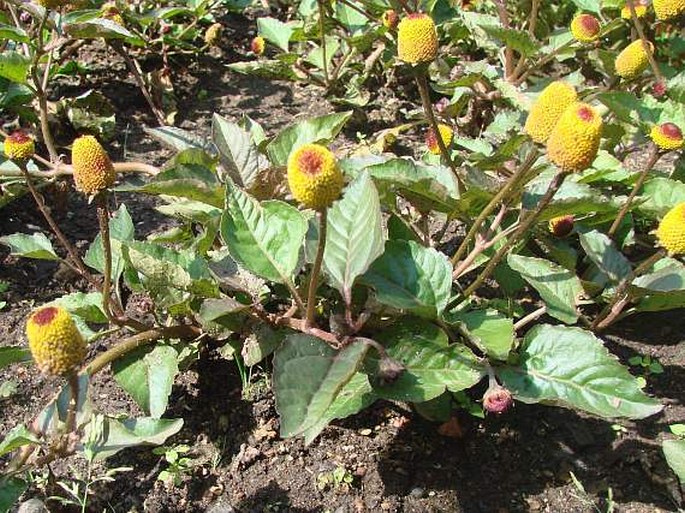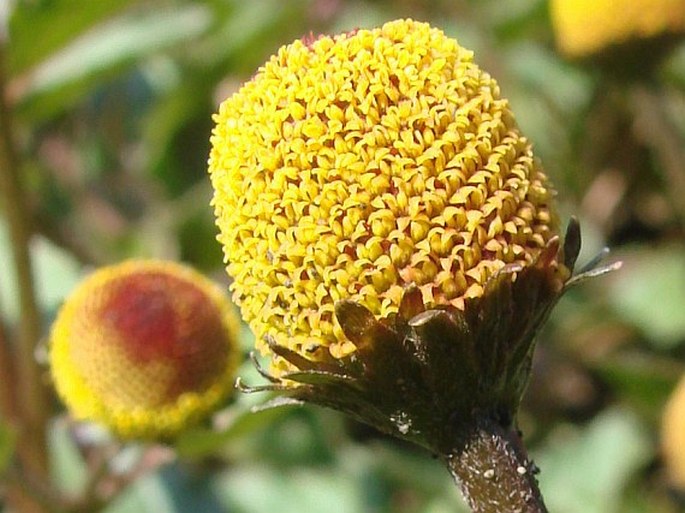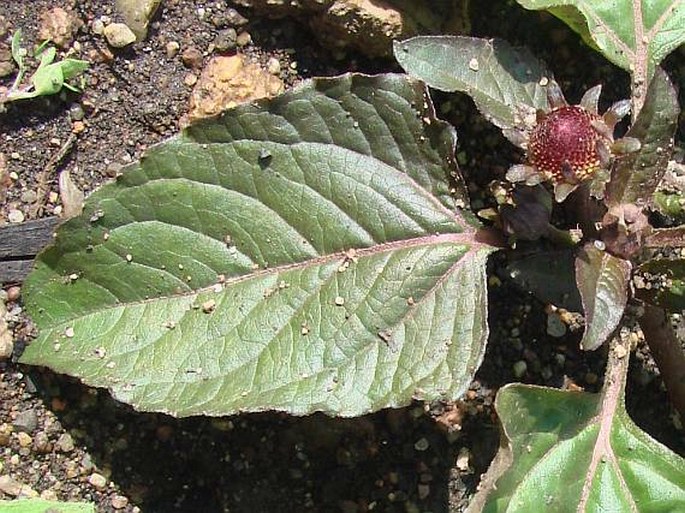Syn.: Anacyclus pyrethraria (L.) Spreng., Bidens oleracea (L.) Cav. ex Steud., Cotula pyretharia L., Pyrethrum spilanthus Medik., Spilanthes oleracea L., nom. illeg.
Family: Asteraceae Bercht. et J. Presl

Distribution: South America, native probable in Peru or Brazil (Amazônia, Mata Atlântica), naturalized in many areas of the world – eg. southern China, Taiwan, India, Nepal, Madagascar, Tanzania, Caribbean, New Caledonia.
Ecology: Known only from cultivation, it escape to weedy habitats. Blooms from April to July.
Description: Annual herb. Stems decumbent to erect, not rooting at nodes, green to red, glabrous. Leaves petiolate, petiole 2–6.4 cm, glabrous to very sparsely pilose, narrowly winged, leaf blade broadly ovate to deltate, 5–10 cm long and 4–8 cm wide, glabrous on both surfaces, base truncate to shortly attenuate, margin dentate, apex shortly acuminate to acute. Capitula discoid, 10.5–23.5 × 11–17 mm; peduncles 3.5–12.5 cm, glabrous to very sparsely pilose; phyllaries 15–18, 3-seriate, entire to sinuate, sparsely ciliate; florets 400–600; corollas 2.7–3.3 mm, yellow, 5-lobed. The fruit is an achene, 2–2.5 mm long, with pappus.
Use: It is cultivated for medicinal, insecticidal, and horticultural purposes.
Note: The genus contains about 30 species, with a pantropical distribution.




These images were taken in culture – Czechia, Botanic Garden Teplice (July 26, 2014).


